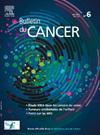Chirurgie prophylactique mammaire, place du DIEP (Deep Inferior Epigastric)
IF 1.1
4区 医学
Q4 ONCOLOGY
引用次数: 0
Abstract
En France, le cancer du sein est le cancer le plus fréquent chez les femmes, avec 5 à 10 % des cas d’origine génétique. Les gènes le plus souvent impliqués incluent BRCA1 et BRCA2, PALB2, TP53, CDH1, PTEN, entre autres. Environ deux femmes sur 1000 portent une mutation des gènes BRCA1 et BRCA2. L’Institut national du cancer (INCa) propose des recommandations pour le dépistage et les traitements de réduction du risque. La chirurgie prophylactique, incluant la mastectomie bilatérale, est une option préventive pour les femmes à risque élevé. La reconstruction mammaire immédiate, notamment par la technique DIEP (Deep Inferior Epigastric), permet de réduire l’impact psychologique de la mastectomie et fait partie du gold standard à proposer aux patientes. Cette technique utilise l’excédent cutanéo-graisseux sous-ombilical et nécessite des compétences en microchirurgie. Malgré les défis logistiques, cette méthode doit être privilégiée pour sa durabilité et son résultat naturel. L’INCa et d’autres organisations travaillent à améliorer l’accès et l’information pour ces traitements.
In France, breast cancer is the most common cancer among women, with 5 to 10% of cases being genetic. Frequently involved genes include BRCA1 and BRCA2, PALB2, TP53, CDH1, and PTEN, among others. Approximately, two in 1000 women carry a BRCA1 or BRCA2 gene mutation. The National Cancer Institute (INCa) provides guidelines for screening and risk-reduction treatments. Prophylactic surgery, including bilateral mastectomy, is a preventive option for high-risk women. Immediate breast reconstruction (IBR), particularly using the DIEP flap technique, helps mitigate the psychological impact of mastectomy, and is part of the gold standard to be offered to patients. This technique uses excess of skin and fat from the lower abdomen and requires micro-surgical skills. Despite logistical challenges, this method is favored for its durability and natural outcome. INCa and other organizations are working to improve access and information for these treatments.
求助全文
约1分钟内获得全文
求助全文
来源期刊

Bulletin Du Cancer
医学-肿瘤学
CiteScore
1.90
自引率
16.70%
发文量
224
审稿时长
37 days
期刊介绍:
Without doubt, the ''Bulletin du Cancer'' is the French language publication of reference in the field of cancerology. Official organ of the French Society of Cancer, this journal covers all the information available, whether in the form of original articles or review articles, but also clinical cases and letters to the editor, including various disciplines as onco-hematology, solids tumors, medical oncology, pharmacology, epidemiology, biology as well as fundamental research in cancerology. The journal proposes a clinical and therapeutic approach of high scientific standard and regular updates in knowledge are thus made possible. Articles can be submitted in French or English.
 求助内容:
求助内容: 应助结果提醒方式:
应助结果提醒方式:


